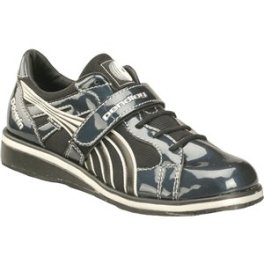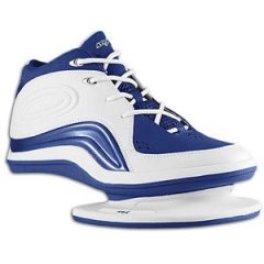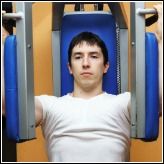Stepping Into Strength Training Shoes
Equipment such as strength training shoes can aid and support us in our strength training efforts. Strength shoes are not cheap so, if the shoe doesn't add value, we are wasting our time and money. Nobody wants to do that, do they? So let's look at some of the features and benefits of two types of strength training shoes and see whether or not they add value to your training or not.
Weight Lifting Shoes
When I first began strength training I wore regular trainers in the gym. While the shoe was new they were good for purpose, they were a snug fit and sturdy. The problem was, I also used them in other parts of my training regime. I ran in them, did my hopping and bounding in them. The upshot was that after a short while, these trainers would begin to look worn and out of shape. Because of this they became a big liability and injury risk to me in the gym. I would sometimes lose balance or turn my ankles while lifting, it was a nightmare.
Normal training shoes tend to be too soft and pliable, this cause the base of the shoe to be unstable. When lifting heavy weights, this can be dangerous! In some lifts such as the power clean, the “catch phase” of the lift needs to be stiff and solid. Soft sole shoe just won’t cut it under these circumstances. You can also lose power in the lift by not being able to drive against a solid surface. Some of the force you exert against the floor is absorbed by the shoe.

Because lifts such as the power clean and power snatch was part of my strength training workouts, I studied Olympic lifters and noticed that they wore special shoes. So in an effort to look more professional in the gym, I had a conversation with one of the lifers who told me how to get hold of a pair (at the time, these types of shoes were not widely commercially sold). You cannot imagine the difference proper weight lifting shoes made to my training.
The Features and Benefits of Proper Lifting Shoes
- Proper lifting shoes are made from leather or material which doesn’t stretch.
- Because of that, your foot will not slide around in the shoe, you are therefore better balanced.
- Lifting shoes are usually made with compression resistance material and the heels are raised.
- Because of that, you are able to perform lifts such as squats more easily as the shoe allows you to get into deeper positions without toppling.
- Because of that, your lifts will be safer.
- Because of that, you will demonstrate better lifting technique
- And because of that, you will be able to exert more force in your lifts and therefore become stronger.
Strength Training Shoes
Strength training shoes are marketed as the ultimate product for the development of lower leg power. However, I have to be honest and say that I have never used one of these shoes.
More importantly, I don’t know of any coach in any sport or track and field athletes who have used one of these shoes as part of their training programs. Nevertheless I have been intrigued by the idea behind the shoe for some time but could never convince myself to try them. I tend to stick to what I know will work and don’t jump (no pun intended) onto any new things that have not been proven – but that’s just me!

Now if you don’t know what one of these shoes look like, let me explain. It is a training shoe with a 4 centimeter raised platform built into the forefoot section. This design forces you to stand on the ball of your foot. This stance activates the calf muscle massively and gets into the deeper muscle of the lower leg. The inventors of the shoe report that training and doing activities while in this forefoot position will lead to increased strength of the calf muscle which in turn will increase your jumping height and force production across the ground.
Do Strength Training Shoes Work?
A study was conducted by Tulane University out on the shoe and I am afraid to say that when compared with normal training shoes, strength shoes was no more likely to make you powerful than training in regular in regular trainers. In fact if anything was discovered it was that the shoe might be the cause of anterior shin pain (“shin splints” to you and me).
Another study conducted at James Madison University over a ten week period showed an increase of calf girth which was more in athlete who wore strength training shoes than in those who wore normal trainers. They were also able to show a greater improvement in vertical jump height than athletes who wore normal trainers.
So, what is going on here?
With so much hype about how good these shoes are, you have to think that athletes who bought these shoes are getting the outcome the shoe manufacturers promises. From my scan of some of the studies that have been carried out on strength training shoes, my conclusions are as follows:
- If you are an untrained athlete you will get good results from wearing these shoes. The point I am making here is that you can use any training program and get results if you have never trained – it not the shoe. The trend of the studies I looked into show untrained athlete improving and trained athlete getting nothing from training with strength shoes (this is always the problem of research in sport, different researches using trained or untrained subjects makes it hard to compare).
- There are many reported instances of injuries to study subjects. These instances of injury are significantly more for the subject who wear strength training shoes than in subjects who wore regular trainers.
Don’t buy strength training shoes to improve your jumping and speed abilities. The risks outweigh the benefits. Read the plyometric pages on this website, you’ll discover how to build real power from the advice given here.







